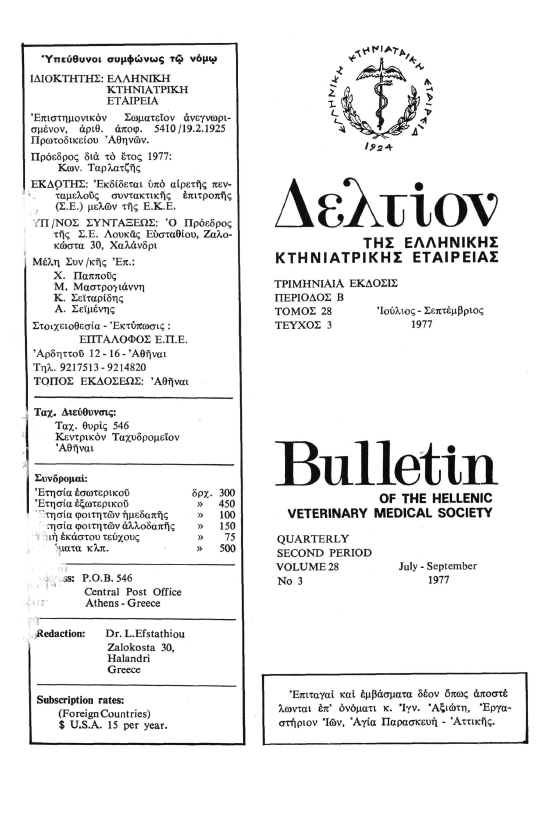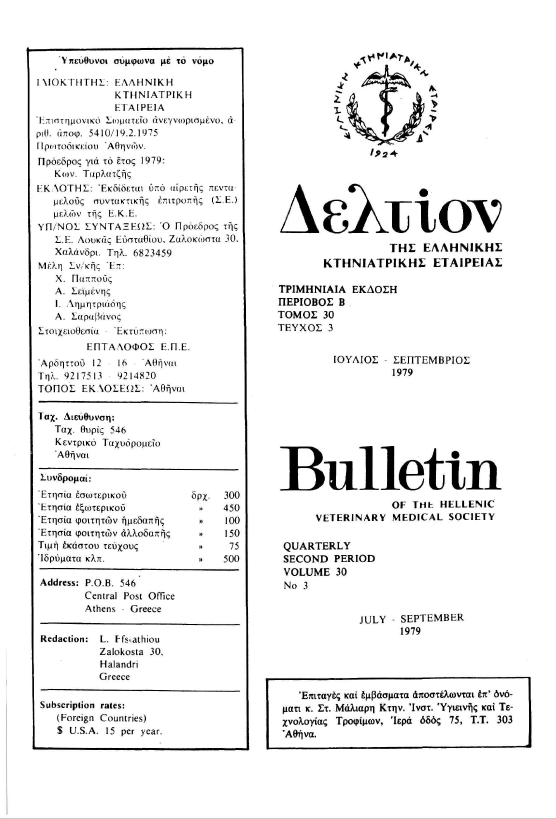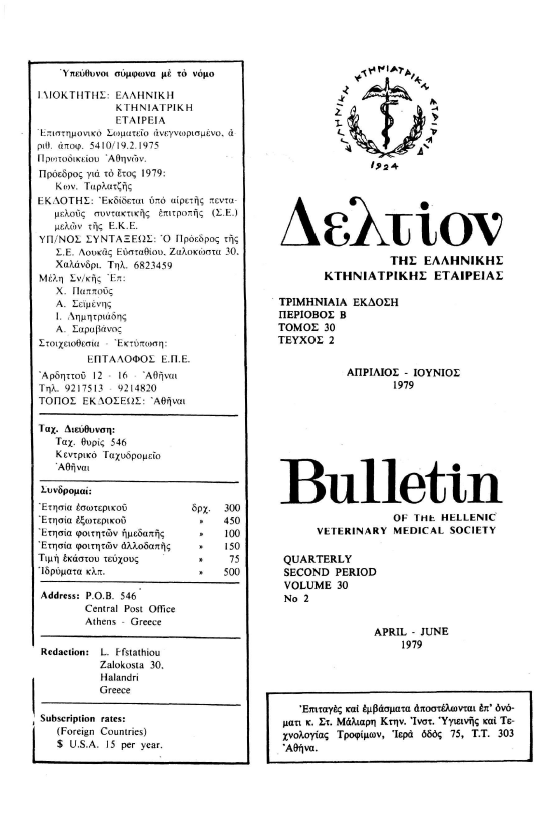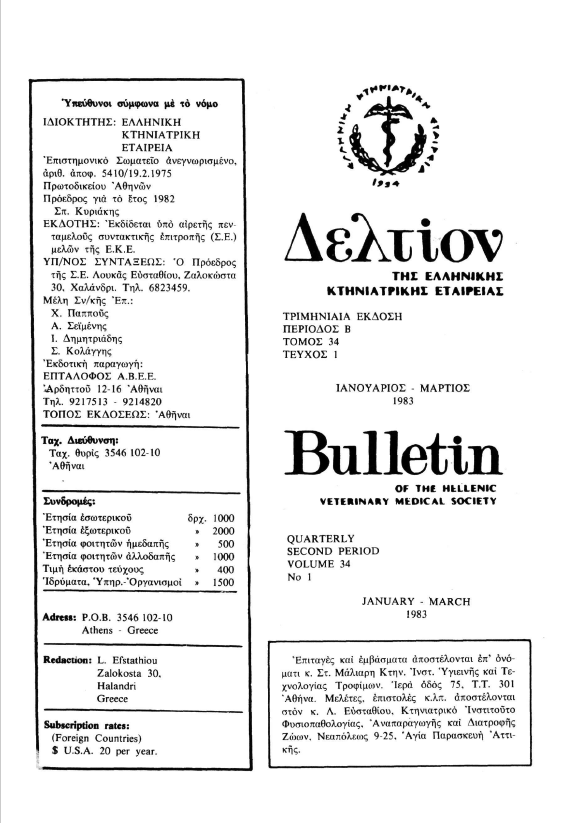Separation of foot and mouth disease virus neutralizing antibodies by ion exchanger
Abstract
Using chromatography with ion exchanger DEAE-50, Foot and Mouth Disease types, Ο,Α and C neutralizing antibodies were separated from hyperimmune cattle serum. The first fraction (Fraction No 0) behaves in electrophoresis and immune electrophoresis (slow movement to the anod) like Ig G2 and its neutralizing antibodies titre is higher than in the other ftactions (Fraction No 1-4) corresponding to Ig G,. From the fractions of the hyperimmune serum, which were tested, Foot and Mouth Disease types A and Ο neutralizing antibodies were isolated with relatively low titres. The same serum tested as whole serum had Food and Mouth Diesease neutralinzing anutibodies of types A, Ο and C 1:216, 1:512 and 1:32 respectively. The fraction No 1-4 of the serum behaving in electrophoresis like Ig G. unlike Ig G, of the colostrum, did not show the hemocytotropism phenomenon.
Article Details
- How to Cite
-
ΔΗΜΗΤΡΙΑΔΗΣ Ι. Α. (2019). Separation of foot and mouth disease virus neutralizing antibodies by ion exchanger. Journal of the Hellenic Veterinary Medical Society, 28(3), 147–156. https://doi.org/10.12681/jhvms.21306
- Issue
- Vol. 28 No. 3 (1977)
- Section
- Articles

This work is licensed under a Creative Commons Attribution-NonCommercial 4.0 International License.
Authors who publish with this journal agree to the following terms:
· Authors retain copyright and grant the journal right of first publication with the work simultaneously licensed under a Creative Commons Attribution Non-Commercial License that allows others to share the work with an acknowledgement of the work's authorship and initial publication in this journal.
· Authors are able to enter into separate, additional contractual arrangements for the non-exclusive distribution of the journal's published version of the work (e.g. post it to an institutional repository or publish it in a book), with an acknowledgement of its initial publication in this journal.
· Authors are permitted and encouraged to post their work online (preferably in institutional repositories or on their website) prior to and during the submission process, as it can lead to productive exchanges, as well as earlier and greater citation of published work.






